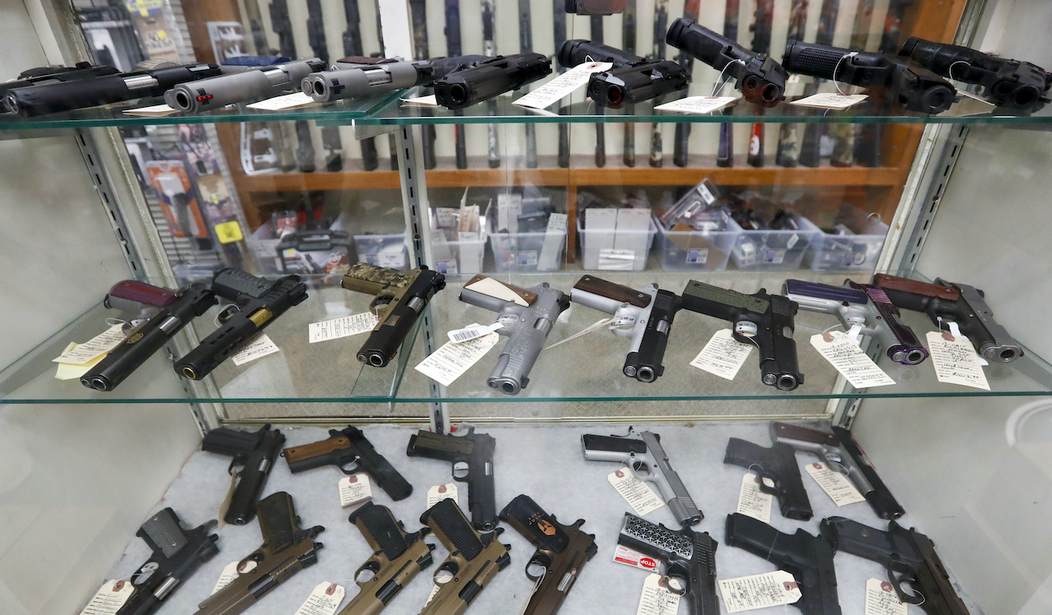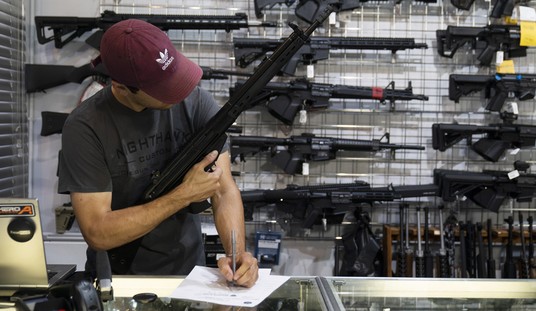A judge in Ontario, Canada has ruled that a potential class-action lawsuit filed against gunmaker Smith & Wesson by victims of a shooting and their family members can proceed, despite the novel legal theory being advanced by the attorneys pursuing the company.
Justice Paul Perell of the Ontario Superior Court says that even though the pistol used in a 2018 attack in Toronto that left two people dead and 13 injured was stolen from a Saskatchewan gun shop, lawyers can argue that the gun company should be held liable for the shooting because of the design of the firearm itself.
In their lawsuit, six claimants including Price’s parents Ken Smith and Claire Smith allege Smith & Wesson Corp. was negligent in the design and manufacture of its M&P (Military and Police) 40 series by failing to install “smart gun technology” that allows the gun to fire only when used by an authorized owner.
“A manufacturer has a duty to make reasonable efforts to reduce any risk to life and limb that may be inherent in its design,” wrote Perell.
The judge said it’s arguable that there came a time “when it was careless for Smith & Wesson not to utilize invented authorized user technology, of which there were many types, some of which Smith & Wesson invented and patented,” the judge wrote.
That’s right. Despite the fact that so-called smart gun technology isn’t ready for prime time, and there were no smart guns available for sale in Canada in 2016 when the gun was stolen, the judge in this case still claims that the argument advanced by attorney Malcolm Ruby is valid.
Ruby’s argument is that Smith & Wesson could have and should have equipped all of its firearms with “authorized user technology”, which it allegedly developed and was ready to bring to market nearly two decades ago.
The suit states that Smith & Wesson has developed a number of authorized user systems and entered an agreement with the U.S. government in 2000 to equip all its guns with the technology by March, 2003. That commitment disintegrated, the claim states, when George W. Bush came into office and backed a law shielding gun makers from liability lawsuits.
No such shield laws exist in Canada. Although Canadian courts have no authority to enforce the U.S. agreement, the lawyer representing the families, Malcolm Ruby, says the document shows that Smith & Wesson recognized the public-safety risk of its products in the hands of unauthorized users and has done little to mitigate it.
One problem for Ruby; the U.S. government said as recently as 2016 that there were still many challenges with authorized user technology. In a report to the Obama White House issued by the U.S. Departments of Justice, Homeland Security, and Defense, the government made clear that smart gun technology wasn’t at a state where it was ready for adoption by law enforcement or the military.
The report both describes the potential benefits of advanced gun safety technology and notes that additional work is required before this technology is ready for widespread adoption by law enforcement agencies. In particular, the report stressed the importance of integrating this technology into a firearm’s design without compromising reliability, durability, and accuracy. To address these issues, the report called on law enforcement agencies to develop “baseline specifications” to outline operational requirements for any firearms equipped with gun safety technology. The goal of the baseline specifications is to make clear to private manufacturers what the agencies expect from this technology.
If smart gun tech wasn’t feasible for government adoption in 2016, it’s a real stretch to presume that it should have been imposed on the civilian market back in 2003.
The reality is that the technology still suffers from some major drawbacks. The Armatix IP1, which was the first “smart gun” to be released for retail sale in the United States, was a $1,800 pistol chambered in .22LR that could also be hacked with a few magnets that cost less than $20.
Kansas firearms manufacturer SmartGunz says it’s bringing its own gun to market this year. The RFID-equipped 9mm pistol requires users to wear a special fingerless glove in order to operate the handgun, which is expected to retail for $2,500 when it’s released in the second quarter of 2021.
We don’t know if the new smart gun will also be able to be defeated with just a few simple tools, but the price alone is prohibitive for most gun owners, especially given the untested nature of the smart gun tech.
The decision by the Ontario judge could have sweeping consequences for U.S. gun manufacturers by encouraging a flood of similar lawsuits across Canada, seeking to hold gun companies responsible for the third-party acts of criminals under the unfounded theory that gun manufacturers like Smith & Wesson have been sitting on reliable, workable, and cost-effective authorized user technology for nearly two decades. It was an awful decision to allow this suit to continue under such a ridiculous theory, and it would be an absolute injustice if Smith & Wesson is ultimately held responsible in any way for the shooting on a Toronto street committed by someone possessing a stolen firearm in violation of the laws already on the books.








Join the conversation as a VIP Member